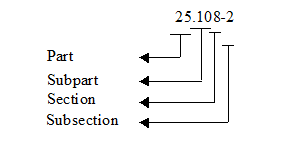A Guide to Understanding the Federal Acquisition Regulation (FAR)
Government | 8 Min Read
If you’re doing business with the federal government or plan to soon, your organization should have some basic knowledge of what the Federal Acquisition Regulation (FAR) is and where to find certain clauses. The FAR is a complex document that outlines a set of rules and regulations for the federal government’s purchasing process. In other words, the FAR is essentially the primary rule book for executive agencies looking to acquire products and services.
As a government contractor, it’s really useful to not only know the definition of the FAR, but also how it's organized, so you can understand how contracts operate and what regulations need to be followed. This blog will serve as your guide to the FAR and how to navigate all the clauses and subsections.
What is the Federal Acquisition Regulation (FAR)?
The FAR was created to form a system for all executive agencies to follow clauses related to government acquisition, planning, and contract administration. It’s comprised of comprehensive guidelines for agencies concerning the purchase of supplies and services to ensure consistent procurement policies and procedures.
The FAR is governed jointly by the Department of Defense (DoD), the General Services Administration (GSA), and the National Aeronautics and Space Administration (NASA).
Compliance with the FAR is important for a contractor considering doing business with the federal government. By adhering to the guidance found in the FAR, the chances to win contracts, avoid legal encounters, and preserve long-term relationships with federal agencies increase.
How the FAR is Organized
The FAR consists of 53 parts, each concentrating on detailed facets of the acquisition procurement. In addition, it’s supplemented by agency-specific regulations such as the Defense Federal Acquisition Regulation (DFARS).
Overall, it’s organized in 8 subject matter areas:
- Parts 1- 4: General
- Parts 5 – 12: Competition and Acquisition Planning
- Parts 13 - 18: Contracting Methods and Types
- Parts 19 - 26: Socioeconomic Programs
- Parts 27 - 33: Contracting Requirements (Cost Principles)
- Parts 34 - 41: Special Categories
- Parts 42 - 51: Contract Management
- Parts 52 - 53: Clauses and Forms
All parts and subparts contain sections, and some sections are divided further into subsections.
FAR 1.105-2 explains the arrangement of regulations, including this diagram that illustrates how the FAR is organized:

It would be beneficial to determine what sections of the FAR apply to your particular situation. You could refer to the table of contents to steer to the applicable parts of the FAR. For example, small businesses will find the Part 19, Small Business Programs and Part 52, Solicitation Provisions and Contract Clauses relevant to their federal contracting potential solicitations.
To make it easier to understand the FAR, contractors should try to familiarize themselves with the general terminology used in the guide. Refer to Part 2 – Definitions of Words and Terms. Reading carefully by section will make it less overwhelming when you start searching relevant clauses.
Reading the FAR
Almost every part has similar sections to help you gain background, learn definitions, and applicability of the clauses. It's important to understand how each part is laid out so when you search for a particular clause, you are reading the full story and not just the clause itself. We suggest you always read a little above and below a clause, if not the entire part/subpart to gain valuable context.
At the beginning of every FAR part and some subparts, there is a section called "scope". This section summarizes the information contained in the part of subpart. The scope is important because it may contain a statement that the rules in part/subpart apply (or do not apply) to certain types of acquisitions. The scope will be numbered with three zeroes after the decimal point. For example, "9.000 Scope of part".
The "definitions" section of FAR parts and some subparts outlines and defines all the terms that will be used in the section. The FAR is notorious for defining words differently from what you may have learned in the past, so this section is crucial. This section typically comes after the scope and will be numbered with "001" after the decimal point.
Next is the "applicability" section. Some FAR parts and subparts contain this section that explains what types of acquisitions the information applies to. This is key because sometimes you may need to completely disregard, or pay close attention to, a regulation depending on several factors.
Some FAR parts and subparts have a '"general" section, providing information to orient the reader to subject matter covered in the following part/subpart. This information is typically more detailed than the scope.
The "policy" section contains broad statements about the federal government's policy relevant to the subject matter covered in the part/subpart.
While the policy section outlines relevant policies, the "procedures" section addresses how government agencies comply with applicable policies.
The "exceptions" section outlines any exceptions to rules mentioned in a part or subpart. This section is important because you could think a clause applies to you, but an exception will reverse it.
And lastly, the "solicitation provisions and contract clauses" section is usually at the end of a part/subpart and tells agencies which provisions and clauses to insert into a solicitation. This is important information for contractors as well because if you are responding to a current or upcoming solicitation, you'll have a better idea of what will be expected of you in the solicitation.
Notable Sections of the FAR
Now that we've covered generic sections of the FAR parts/subparts, let's get more granular and talk about notable FAR sections that may be relevant for you.
FAR Part 19: Socioeconomic Programs
This section is applicable if you're a small business or subcontract with small business. FAR Part 19 describes how a certain percentage of contracts and subcontracts must be awarded to small businesses, i.e:
- Subpart 19. 15 Woman-Owned Small Business (WOSB)
- Part 19.1405 Service-Disabled Veteran-Owned Small Business (SDVOSB)
- Subpart 19.13 Historically Underutilized Small Business (HUBZones)
- Subpart 19.304 Small Disadvantaged Business (SDB)
- Subpart 19.8 8a Program
FAR Part 19 outlines small business size standards and concludes small businesses can compete in federal contracting and support reasonable competition with the federal government market.
In addition, FAR Part 19 defines policies and procedures to follow regarding subcontracting in federal procurement contracts. The policy and procedures involve:
- The bidder develops a subcontracting plan that defines goals and reporting progress to submit.
- The Contracting Officer reviews the proposed subcontracting plan to determine if acceptable.
- Contractors must regularly report their performance based on requirements.
- The Contracting Officer could periodically review compliance with contracts.
This regulation holds the prime contractors accountable to the provisions stated in the subcontracting plan.
FAR Part 52 – Solicitation Provisions and Contract Clauses
FAR Part 52 consists of a group of clauses and provisions in contracts that stipulate certain Terms and Conditions (T&Cs) in the agreement between the government and a contractor. The clauses include:
- Inspections and Acceptance
- Changes
- Termination
- Payment and Invoicing
- Disputes
The T&Cs of a contract are defined and agreed upon by all parties involved – this will stipulate changes to the work, payment terms, delivery schedules, and other important factors of the agreement. This section is really important for contractors responding to bid opportunities. If you want to respond to a Request for Information (RFI), Request for Quote (RFQ), and Request for Proposal (RFP), you can use the FAR to fully read up on and understand the solicitation provisions and clauses.
FAR Part 14—Sealed Bidding
FAR Part 14 describes the rules and regulations for sealed bidding procurement methods used by government agencies to purchase goods and services. As a contractor, pay attention to the detailed requirements and conditions for awards, information for bidders and deadlines for submitting bids.
On the agency side, it covers bid opening and evaluation, award procedures, contract award protests, amendments and changes. This part is significant in channeling the government’s procurement process to ensure fair market price, safeguard transparency and competition in the procurement process, and determine best value for the government.
FAR Part 15—Contracting By Negotiation
FAR Part 15 relates to the negotiated acquisitions with the objective of gaining the best value for the government. Within FAR Part 15, it stipulates the source selection process, negotiation procedures, technical evaluation, cost and pricing data, and proposal evaluation. It’s an organized methodology to evaluate proposals for the procurement of goods and services. All must be conducted in a reasonable and competitive manner which would result in the best value for the government.
Competition requirements are in FAR Part 6 – A Deep Dive into Federal Government Competition Requirements will provide context.
FAR – Terms and Conditions
Standard terms and conditions are called clauses and by regulation non-negotiable. Important clauses to standard government contracts include:
- Subpart 49.4 – Termination for Default
- Part 52.249-2 Termination for Convenience of Government (Fixed-Price)
- Part 52.243-4 Changes
- Part 52.232-1 Payments
- Part 52.246-2 Inspection of Supplies – Fixed Price
Agency Specific FAR Regulations
As mentioned briefly above, there are several agency-specific supplements to the FAR. These agency FAR regulations both implement and supplement the FAR when it adds policies and procedures not covered in the FAR, and are specific to an agency's function.
Management of the FAR—Keeping an Eye Out for Changes
The FAR is administered by the Office of Federal Procurement Policy (OFPP) within the Office of Management and Budget (OMB). When deemed necessary, the FAR will be updated several times a year due to changes in policies, regulations, and laws.
There is a lot to learn and understand about FAR. For the most part, by separating the FAR into smaller sections, you can begin to understand the various rules and regulations. If you are interested in federal acquisition and would like to learn more, check out our blog, 13 Important Federal Acquisition Regulation (FAR) Clauses for GSA Contractors. If you have questions about maintaining your GSA Schedule, feel free to contact one of our consultants.






